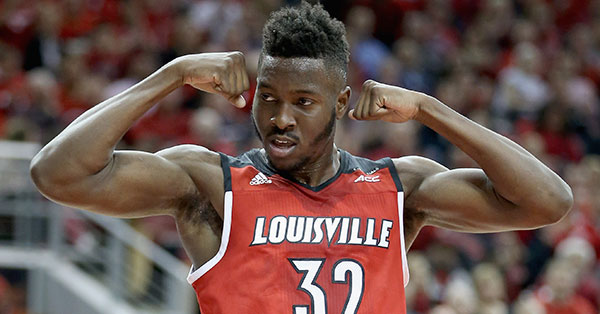Houston Rockets
Film Study: Chinanu Onuaku
Taking a closer look at the strengths and weaknesses of Rockets second round pick Chinanu Onuaku out of Louisville.
Published
9 years agoon
The NBA Draft is the annual opportunity for organizations to improve depth, find a probable starter, and gamble on potential contributions from international and collegiate prospects. Many pundits, reporters and fans did not know if the Rockets would stick with their two second-round picks at 37 and 43.
The Rockets were reportedly looking at trading into the first round of the 2016 NBA Draft, and I heard on Thursday morning that it was the goal. However, the Rockets stayed at those two second-round positions and selected 6-foot-9 Louisville PF/C Chinanu Onuaku with 37th overall pick, and 7-foot-2 Chinese C Zhou Qi with the 43rd overall selection.
After the draft, the Rockets reportedly agreed to deals with three players at positions of need for this upcoming season. Oregon State guard Gary Payton II, Gonzaga forward Kyle Wiltjer, and Texas guard Isaiah Taylor all signed three-year deals with team options as undrafted free agents. Not all rookies will contribute right away, and many will lack the opportunity to crack the rotation. A majority of these players will likely see time with the Rio Grande Valley Vipers.
With that in mind, it’s important to highlight two specific players who will have a chance to prove their worth and ability to contribute and develop a role in Coach Mike D’Antoni’s offense: Chinanu Onuaku and Gary Payton II.
This will be a two-part series. I’ll first highlight how Chinanu Onuaku fits the Rockets spread pick-and-roll system and how he can continue to develop offensively and defensively. For the second piece, I’ll analyze Gary Payton II and break down his offensive and defensive strengths.
Chinanu Onuaku
First things first. Onuaku is younger than me by one month. He’s 19.5 years of age, but boasted a 13.9 Box Score Plus-Minus — which is an ELITE statistic for a college sophomore (or anyone his age). He’s an inch shorter than your prototypical NBA center at 6’9, but he makes up for this with his 7’3 wingspan. The Rockets value their draft and scouting models when evaluating collegiate and international players. Chinanu Onuaku excelled in various in-depth statistical categories, and factoring this with his age made him a very underrated prospect by different models. Onuaku was seen as a potential lottery selection by statisticians, and it’s not surprising for Morey to take this route, as he has done with Clint Capela and Montrezl Harrell in previous seasons. Despite his statistical accomplishments, Onuaku was ultimately drafted for his contributions on the basketball court.
Defense
Defense is where Onuaku should make his biggest contribution to the Rockets. As a 6’9 center, he is undersized, but he does have intangibles that allow him to excel on the floor. During his two years at Louisville, Onuaku had a 2.2% steal rate. His wingspan and length created mistakes for ball-handlers, deflected passes and ignited fast break opportunities. Onuaku blocked two shots per game in about 25 minutes/game (3.4 blocks per 40 minutes), ranking third in the ACC. He also had a defensive rating of 84.9, second-best in the entire NCAA. Even better? When Onuaku was on the floor, Louisville only allowed 82.7 points per 100 possessions. His interior defense can be categorized as “pretty good” to “really good”, with a chance at becoming elite in the NBA.
He doesn’t have the best vertical, but his feel for the game allows him to position himself around the paint to contest and alter shots. With Louisville, he had the flexibility and freedom to roam the paint area and help on backdoor screens and other off-ball screens. He’s also smart and quick enough to rotate over and patrol the lane. Anticipation is a skill that many interior-based Bigs lack, but Onuaku possesses that and more. Combine this with his wide frame and size, and the Rockets have a defensive player who can impact the opposing team’s shot selection immediately.
In the modern NBA, it’s important for defenses to have personnel who are athletic, versatile, and smart defenders. This allows defensive schemes to increase complexity, switching everything and forcing miscommunication and mistakes (in this case, creating more transition opportunities for the young, athletic Rockets).
Pick-and-roll defense is a requirement for any NBA big who hopes to see consistent playing time. With Louisville, Onuaku had many situations where he was forced to roam around the perimeter or contain the ball-handler off pick-and-rolls. He has quick feet that produce lateral movement, using his knees and footwork to stay in front of speedy ball-handlers. If beat by the first step of the ball-handler, Onuaku has long arms to recover and mitigate high-percentage shot attempts or eradicate passes inside the paint. He’s also a diligent communicator, constantly pointing out screens or player movement while making sure his teammates are in their proper assignments. Where he struggles in pick-and-roll defense is consistency. The Rockets will not want him to switch onto a smaller guard on every possession because he’s prone to immaturity in stance and hand placement. He has problems with reaching, generating poor foul calls (foul rate of almost 5 times per 40 minutes). Assistant coaches Jeff Bzdelik and Roy Rogers will work closely with Onuaku in this area. They’ve had extensive experience in developing NBA bigs, teaching them to use frame and size to manipulate angles and gain advantages against smaller players.
Offense
At 6’10 (with shoes) and 245 pounds, Onuaku has a perfect frame and core for the new and revamped Rockets offense. His strength can open up spacious driving lanes for ball-handlers and shooters. Screens in D’Antoni’s offense require the screener to set a pick at a 45-degree angle on the bottom side of the on-ball defender. Essentially, the screener picks the waist of the on-ball defender, forcing them to go over the top of the screen. With this 45-degree angle, the contact gives the ball handler enough space to maneuver inside. Onuaku isn’t polished offensively, but he possesses attributes and a terrific body to provide contributions in the heavy spread screen-and-roll and pick-and-roll offense.
Most of Onuaku’s points will come off of offensive rebounding and rim running. He had 4.9 offensive rebounds every 40 minutes, one of the best rates in all of college basketball. As mentioned before, Onuaku has great anticipation and feel. He can locate the ball, move quickly towards the area, and box-out any defender (great contested rebounding percentage). He grabbed 13.8% of Louisville’s available misses by using his high motor and relentless energy. Lobs, dump-offs, and layups consisted of 53% of his field goal makes. Louisville’s offense was very guard-oriented, explaining why he did not have many attempts during the season. When he was involved in the offensive movement or set, he was in the 27th percentile for pick-and-roll scoring. He has great hands and cutting ability, utilizing the duck-in to get easy looks at the rim. However, he doesn’t have the most explosive vertical or speed to escape from defenders, and thus can have trouble finishing over opposing players who are bigger and longer. The good news for Onuaku is that D’Antoni is terrific at cultivating and molding young bigs into competent pick-and-roll players.
Chinanu Onuaku’s biggest strength on offense may be his ability to pass the basketball. He does boast a high turnover rate of about 23%. However, he has a very high basketball IQ for someone of his age and experience level. His passes aren’t overzealous – instead, they’re soft and accurate while often putting the ball in position for the player to catch and move. For those questioning the turnover rate, consider Louisville’s offense and the movement involved. With more polish and systematic consistency, that number should decrease dramatically over the course of his career.
With the new Rockets offense, ball movement and player movement will be emphasized. Onuaku’s strength as a passer is hitting the cutter as they dive inside and finding the open shooter in the corner or along the wing. It may seem easy, but rarely do players of his size and length possess such mastery of passing at such an early age. With him on the roster, and if Motiejunas returns, the Rockets may be changing the style of player they want at that position. Bigs on D’Antoni’s roster must possess the ability to pass the basketball and help facilitate movement and scoring on offense, something Onuaku clearly has and will improve upon.
Conclusion
Chinanu Onuaku isn’t the most explosive or flexible athlete. His standing reach is incredible, but his lack of a significant vertical limits him offensively as a pick-and-roll threat. He’s not a professional scorer. However, that’s not what the Rockets were looking for when they drafted him. They marveled at his interior defense, ability to switch onto perimeter guards and eradicate possibility of penetration, passing to cutters and open shooters, and his high IQ on offense.
Onuaku should get playing time on the second unit as someone who can anchor the defense and grab rebounds at a high rate over opposing front-line players. Will he be a star? No. But he’s someone who can star in his role, develop into a consistent and dominant back-up PF/C, and provide the Rockets with consistency at a position which has had a revolving door in effort and play the last few seasons.
You may like
Houston Rockets
Looking Back on the Trade for Phoenix’s Draft Picks
Are the Rockets set to cash in on Phoenix’s downfall or could a Suns retool murky the waters?
Published
1 month agoon
March 12, 2025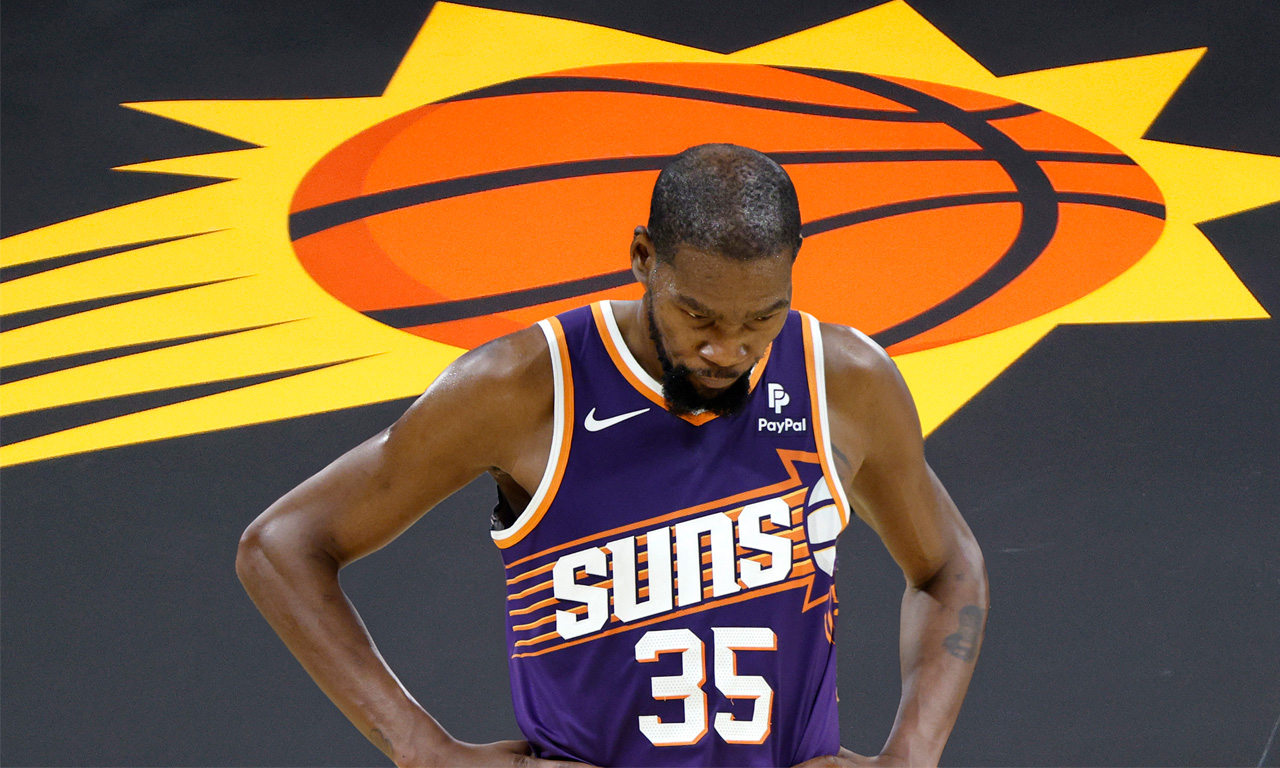
As the Houston Rockets set to host the Phoenix Suns tonight, it seems the right time to take a look back at the trade that linked these two franchises together for the foreseeable future.
This past June, the Rockets made a trade with Brooklyn that sent back to the Nets control of their 2025 and 2026 unprotected first-round picks. In exchange, the Rockets received a large chunk of Phoenix’s future (2025, 2027, 2029) and control of the Dallas Mavericks’ 2029 first.
In essence, the Rockets traded one pick and one swap for two picks and two swaps. All unprotected.
Thoughts At The Time of the Trade
If I’m going to discuss the current outlook of this trade, I have to be honest about how I saw it at the time of the move. While I didn’t hate this trade initially, I definitely didn’t love it either.
I liked that the Rockets increased their overall trade assets. I also liked that they extended the timeline to be able to make a bigger trade and I also appreciated that they kept control of the 2027 Brooklyn swap.
But I didn’t like that the Rockets gave up what seemed like the more established value (Brooklyn) for a more uncertain gamble (Phoenix). The Rockets did not control a “tanking runway” of picks to offer back to Phoenix — all of the picks Houston got in the deal were in staggered years (’25, ’27, ’29). I also felt Brooklyn, who badly needed to rebuild, got away with paying market value to get their picks back despite the fact that the Rockets invested years in watching those picks appreciate up to the point that they had the Nets completely over a barrel.
Net-net: I felt like more certainty was traded for less certainty and it was more of an equitable trade for both teams rather than Brooklyn paying dearly to get back the things only the Rockets could offer.
There were two ways I thought this trade could pay dividends: The Suns needed to flame out immediately, as in this season (unlikely), or the Rockets could trade all those pick assets as part of a deal for a real superstar in the next 12-18 months (more likely).
In a testament to how quickly change can occur in a very unpredictable NBA, four things have happened that have been positive indicators for the Rockets in making this move.
The Suns are fading
While Phoenix had major salary cap issues, dealing with the second apron, they didn’t appear to have problems on the court. They jumped out of the gate 8-1 and looked like a legitimate contender behind their star trio of scorers in Kevin Durant, Devin Booker and Bradley Beal.
Given Houston controlled Phoenix’s pick this year via a swap, it looked like the Rockets would come up empty-handed on the trade this season.
That changed quickly.
Injuries, serious depth concerns and a lack of a defensive identity has sent Phoenix spiraling. Booker’s availability has been inconsistent, forcing Durant to carry the load, while Beal has not quite fit in at all. Their financial limitations, thanks to owner Mat Ishbia’s all-in spending spree, have handcuffed their ability to improve the roster around the three stars.
The Suns are sitting 11th in the West, having gone 22-34 since that hot start, and are currently trying to catch a depleted Dallas squad to get back into the play-in picture.
As of right now, the Rockets project to end up with a lottery pick (albeit a late one) this season out of the trade.
Phoenix was caught shopping Durant
Because the Suns struggled so hard after the start, they tried to make a major move at the deadline but could not unload Beal, in large part due to his no-trade clause.
As a result, they may have made a misstep: They openly tried to trade Durant, which inevitably became public news.
Now? Durant will almost assuredly be traded this summer — likely to a destination that he handpicks. This means the Phoenix Suns will have to look at all possibilities for their future, including potentially having to give Rafael Stone and the Rockets front office a call.
But keep in mind, the Rockets can not offer Phoenix the ability to completely rebuild via the draft right now. Phoenix’s 2026 pick is controlled by Washington. They would have to get extremely creative to set that stage. A retool in Phoenix is much more likely.
Could Brooklyn have been better than expected?
This one is tougher to gauge.
The Brooklyn Nets are currently tied for fifth-worst team in the league, giving them strong lottery odds this summer. This was expected. After all, the Nets, even with a healthy Mikal Bridges and a full roster, were not a good team last season, closing the year 20-41 in the final three quarters of the season. The Rockets ended up with the #3 pick (Reed Sheppard) as a result of Brooklyn’s mediocrity.
However, if the Rockets had not placed that pick back in Brooklyn’s hands, would the Nets be better than this?
Brooklyn brought in a new coach in Jordi Fernandez that has had a positive impact. They have dumped off players, such as Dennis Schroeder and Dorian Finney-Smith, that impacted winning. The bar to make the play-in in the East (.415 winning percentage) is obscenely low, with Brooklyn being just five wins away from it at the moment.
And on top of that, Brooklyn did have lots of draft capital that they could have moved to try to win now.
It’s very tough to say as you don’t know if a team with Bridges still in Brooklyn might have actually been worse than this current squad, but you could make a case that the pick the Rockets would have ended up with from Brooklyn this season would be eerily similar to the one they will end up getting from Phoenix this year.
Again, this is a tough call.
Nico Harrison Hooked the Rockets Up
As part of the trade, the Rockets got control of the Dallas Mavericks’ 2029 first-round pick (unprotected, of course). While there’s really no way of knowing what a pick will be five years out, we did know that Luka Doncic would be just 29-30 years old that season and it was fairly etched in stone that he would be the core piece of a Dallas squad that season.
Enter chaos in Dallas.
Doncic was shipped out in the trade that shocked the world, which could have a major impact on the Rockets. Dallas’ current core of Kyrie Irving and Anthony Davis will be 37 and 36 years old that season, respectively.
On paper, the value of that pick shot up.
Final Summary
Right now, the outlook on these picks looks strong. One source stated off the record that they feel the 2029 Phoenix pick is the best pick asset out there that is owned by another team. The Rockets would be reluctant to add that one specifically into any trade unless it’s for a truly legitimate star.
But if there is any lesson that the NBA teaches us over and over again, it’s that it’s very hard to predict where a team will be a year from now, much less three years from now.
Can the Rockets pressure Phoenix and leverage the ownership they have of their draft capital to get what they really want (Booker) from them? Could a Suns retool around Booker and Beal, with the right pieces and assets acquired from a Durant trade, significantly change their on-court outlook and cap sheet — which in turn could damage the value of the picks Houston controls?
Bottom line is it has worked out well this season, and the future forecast at the moment is promising. The current value of those future picks appears strong. What will likely determine history’s final grade for this trade will be how it sets them up for the trade to come, and that’s where fans will be looking to Stone and the front office for action starting this summer.
Houston Rockets
Amen Thompson’s ankle injury will be re-evaluated in one week
“The things he does you can’t replicate,” says Rockets coach Ime Udoka
Published
1 month agoon
March 10, 2025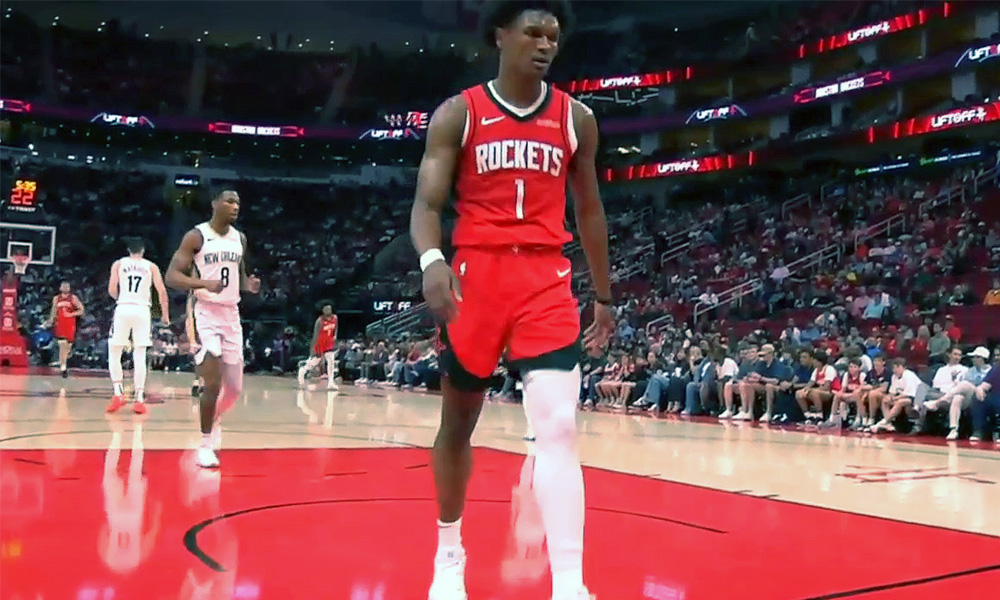
Rockets young star Amen Thompson will have his ankle injury re-evaluated in one week, according to Ime Udoka.
Thompson had an MRI on Sunday and the Rockets coach confirmed all imaging (X-ray, MRI) was negative.
“Just some swelling and pain, obviously,” said Udoka.
If you listen to Udoka, you can tell he knows how special Amen is to this team. He said the Rockets are missing a lot by not having him out there.
“Obviously, the things he does you can’t replicate,” said Udoka. “[Amen is] a guy that plays every position for us. When one goes down, he runs the point. If another is out, he runs the four.”
Amen is one of the best defensive players in the game, and as a one-on-one defender of guards/wings, he might already be the best in the league in just his second season. He’s holding his opponents to 40.5% shooting from the field, tops in the league.
“He’s a very unique defensive player,” said Udoka. “We got some guys that do some great things there, but I like to put him and Dillon on the best two usually, night to night. You got Tari and that’s a luxury as well, but the way he goes about it is different. His athleticism, size, speed, strength, shotblocking ability, steals… he’s all over the place.”
“Hard to replicate for sure.”
Amen injured his ankle late Saturday night in a blowout win against the Pelicans, but the unfortunate part was he probably should not have been on the floor in the first place.
The Rockets left Amen Thompson in the game in a blowout to get one more rebound for a triple-double and he just got injured. He's heading to the locker room with a limp. https://t.co/UBtrEpgWuU pic.twitter.com/D8GeKP8sQk
— ClutchFans (@clutchfans) March 9, 2025
The Rockets had built well over a 30-point lead by early fourth quarter. Jalen Green was able to rest the entire fourth. Alperen Sengun came out of the game with 7-8 minutes left while Dillon Brooks and Tari Eason came out with 6:00 left. But Thompson, who had posted an insane +39 on-off number, remained in the game because he was one rebound shy of a triple-double with 15 points, 11 assists and nine rebounds.
Udoka addressed that decision on Monday before the game against Orlando.
“What I typically don’t do is wholesale substitutions,” said Udoka of the decision to keep Amen in the game. “Albeit 30[-point lead] at six minutes [left] is different than losing to Minnesota, a 16-point lead with four minutes [left].”
“I’ve seen it go both ways in the past. You take out guys too early and have to bring starters back, and vice versa.”
Thompson has played in 60 games this season, five short of being eligible for postseason awards. He absolutely should be up for an All-Defensive nod this season so keep an eye on him getting back in time for that. He would need to return to action no later than April 4th for the game against the OKC Thunder in order to play enough games to be eligible.
Houston Rockets
How the Kyrie Irving Injury Impacts Rockets
Houston’s draft positioning and offseason plans could be impacted by Dallas
Published
2 months agoon
March 4, 2025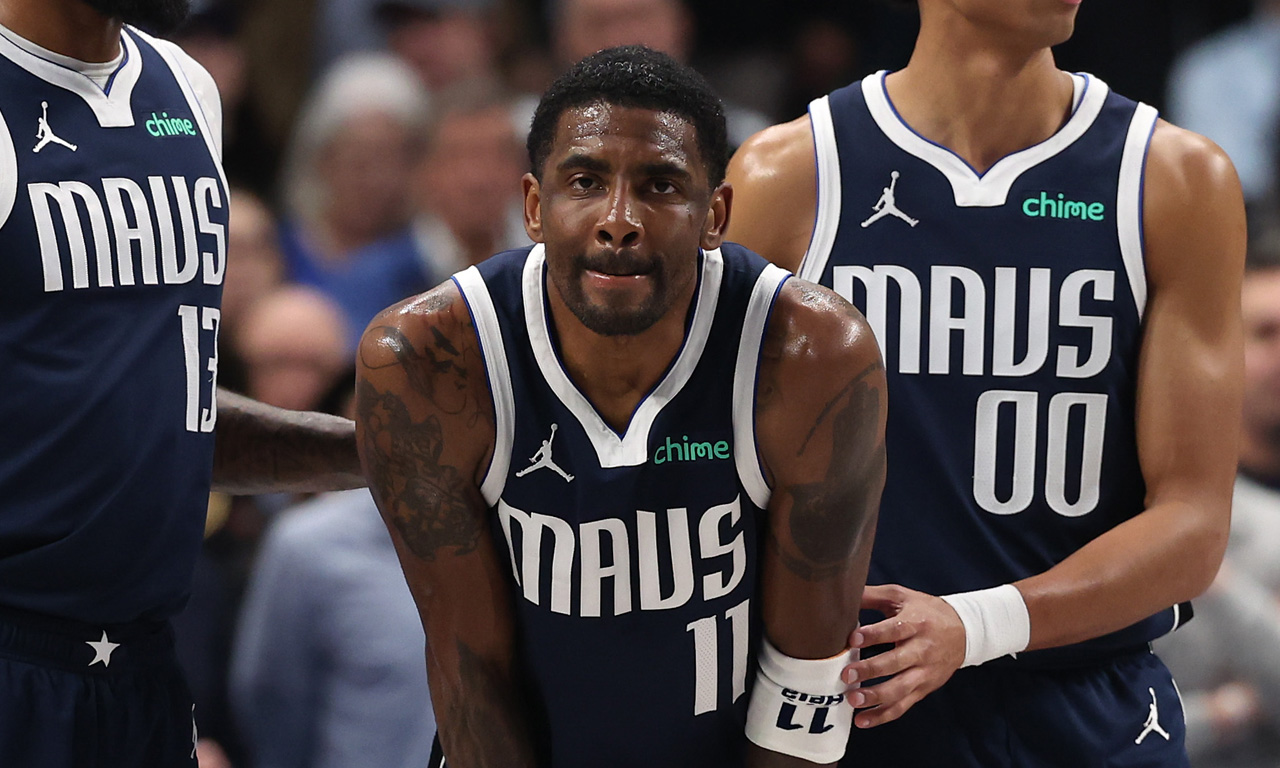
Dallas Mavericks guard Kyrie Irving was injured Monday night and the news dropped on Tuesday that the knee injury is serious — a torn ACL in his left knee that will end his season and a good portion of next season as well.
Brutal. I can’t think of an NBA team that imploded faster than the Dallas Mavericks.
You trade away a 25-year-old phenom who just hoisted you on his back en route to the NBA Finals a year ago. You cashed in that golden ticket to go all-in on a trio of aging stars in Kyrie, Anthony Davis, and Klay Thompson.
Bold strategy, Nico. Let’s see if it pays off.
(Narrator: It’s not paying off.)
The Mavericks had some interesting potential this year and maybe the next couple of years once everyone was healthy, but now? Their star guard is likely out until the calendar year 2026 and Klay and AD aren’t getting any younger nor more durable. The Mavericks may have actually swapped their future for a present that never arrives — and Dallas GM Nico Harrison has to be feeling overwhelming pressure right now.
So how does this impact the Rockets?
For starters, Houston has a game remaining on the schedule against Dallas on March 14th at Toyota Center — Davis may or may not be back for that game.
More importantly, Dallas is the 10th seed in the West at the moment, just 3.5 games ahead of the Phoenix Suns (11th seed). The Rockets control Phoenix’s first-round pick unprotected this season via a swap. We need as many West teams as possible ahead of Phoenix to keep them out of the play-in/playoffs and to push them as deep into the lotto as possible.
This complicates that. Phoenix’s remaining schedule is the toughest in the NBA by a good margin, with plenty of games left against the league’s best teams, so it still looks promising overall — but we’re talking about Kevin Durant, Devin Booker and Bradley Beal. They can still get hot at the right time while Dallas may struggle.
So keep a close eye on that. The good news is the Portland Trail Blazers are one of the hottest teams in the league and they are (shockingly) nipping at the Arizona squad’s heels.
Taking a look ahead to the offseason, the Kevin Durant Pursuit will be big.
This one is a little more complicated for Houston. The Rockets really want Devin Booker but, as of now, the Phoenix plan appears to be to trade KD this offseason and retool around Booker. The Rockets will have interest in Durant but they’re not going to sell the farm (prospects and all the picks) for a 37-year old like they would for Booker.
Three teams that I’ve heard a lot about from Rockets circles that will be in the mix are Houston, Minnesota and Dallas — Timberwolves and Mavericks have been considered the main competition. But, a lot of this will depend on Durant himself and where he wants to play at this stage of his career.
Keep in mind also, if the Suns are “retooling” around Booker and Beal (holding the no-trade clause), then they could be placing a higher priority on win-now players over the return of their own draft assets. The Rockets definitely have the best assets overall to offer up in any trade package between those three teams, but if Phoenix does prefer finding the right ready-to-win players around Booker/Beal, that gives Dallas and Minnesota a real chance.
This injury “may” take Dallas out of the equation, and they are/were definitely a contender for KD’s services given his past relationship with Kyrie and the way Dallas was positioned to win right now. Does KD at his age want to wait for Kyrie to be healthy?
And one last friendly reminder: The Rockets control that Dallas 2029 first (unprotected).
Houston Rockets
Rockets Sign David Roddy to Two-Way Contract
Former first-round pick has played with the Grizzlies, Suns and Hawks
Published
2 months agoon
March 3, 2025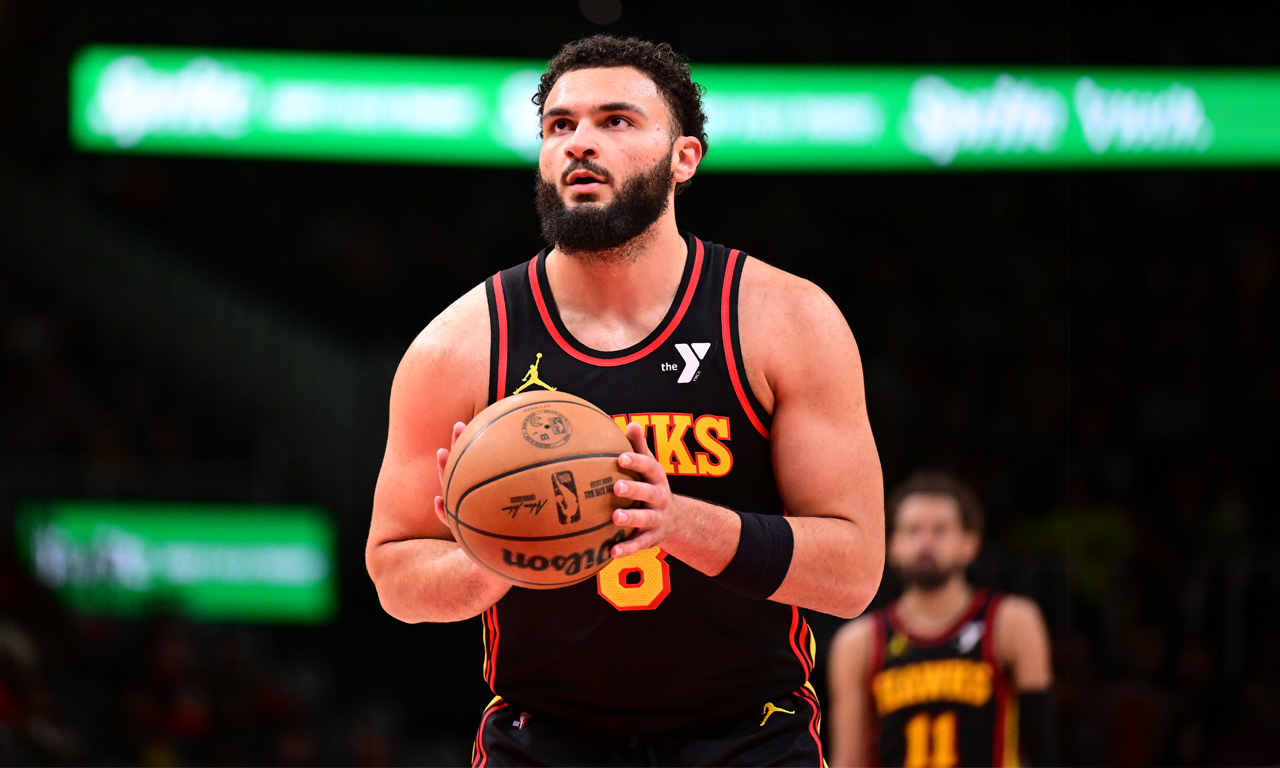
The Rockets made a move on Monday, signing former first-round pick David Roddy to a two-way contract.
The two-way spot opened up after the front office signed Jeenathan Williams to a standard four-year, $8.2 million contract (with friendly team options all along the way).
Roddy is 6-foot-5 and 250+ pounds but sports a 6-foot-11 wingspan. He was taken with the 23rd pick in the first round of the 2022 NBA Draft — six selections after the Rockets drafted Tari Eason. A standout in college, Roddy averaged 19.2 points, 7.5 rebounds, 2.9 assists, 1.2 steals, and 1.1 blocks per game during his junior season at Colorado State.
Roddy, who turns 24 later this month, is a physical player who can play multiple positions. He’s a solid rebounder for his size/position. He has played in 165 games over three seasons with the Grizzlies, Suns, Hawks and most recently Sixers, averaging 6.2 points and 2.9 rebounds per game.
The guard/forward has not shown efficient shooting, however — he’s a career 30.5% three-point shooter and just 68.4% from the line. His defense is better inside than out.
Ultimately, it will be those two things — three-point shooting and defense — that will determine his chances of carving out a consistent role in the league.
All in all, it’s a low-risk signing and the Rockets get a look at a prospect that fits their age timeline.
Houston Rockets
Houston a potential landing spot for Ben Simmons post-buyout?
Published
2 months agoon
February 6, 2025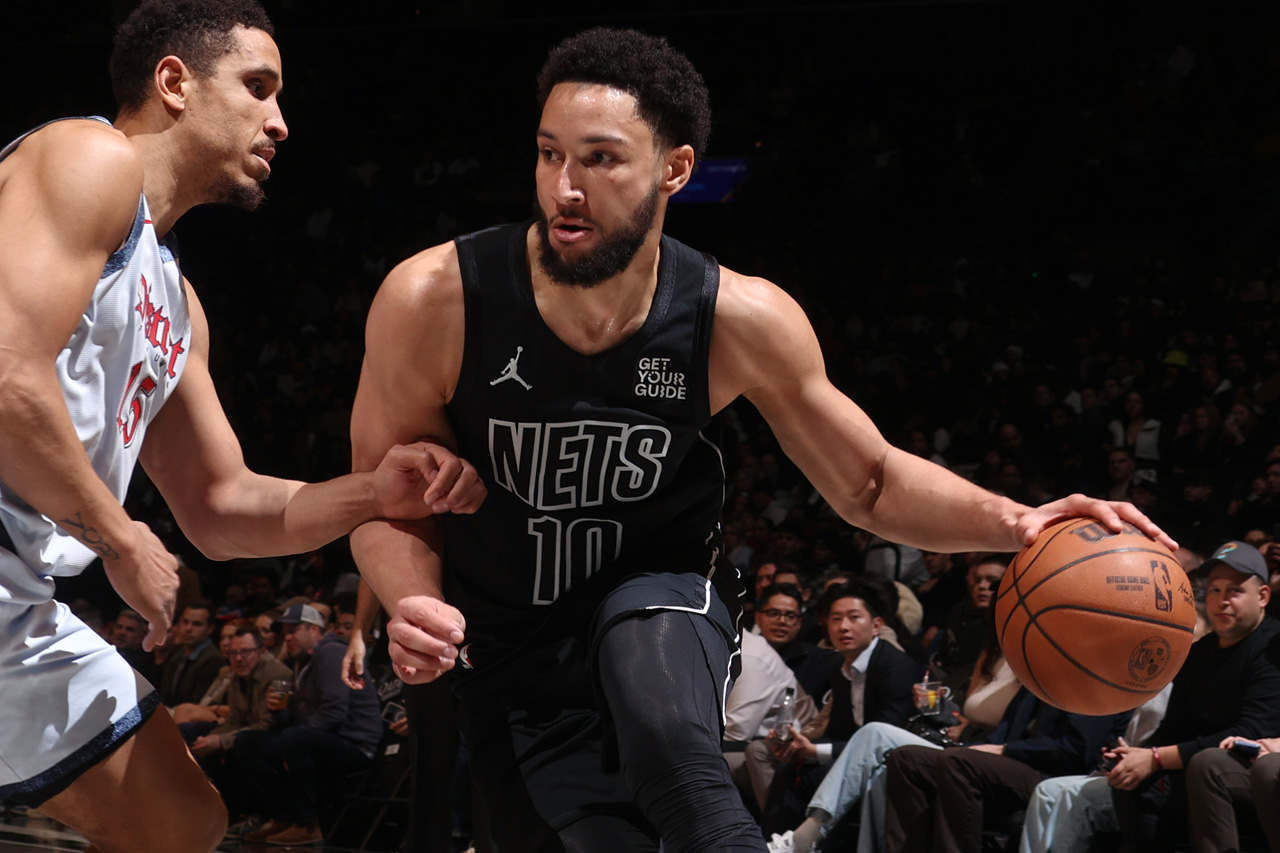
ESPN NBA analyst Brian Windhorst said on Thursday’s NBA Trade Deadline show that Brooklyn Nets forward Ben Simmons is working on a buyout and the Houston Rockets is a potential landing spot for him.
“Cleveland and Houston are two situations for Ben Simmons,” said Windhorst.
Brian Windhorst says the Cavaliers and Rockets are buyout locations for Ben Simmons.
Thoughts? pic.twitter.com/7ly4mvmxr5
— ClutchFans (@clutchfans) February 6, 2025
Advertisement
Rockets coach Ime Udoka was an assistant coach in Philadelphia in 2019-20 when Simmons was with the Sixers, before injuries took a significant toll. In fact, Udoka, when speaking about Amen Thompson earlier this season, brought up some comparisons to Simmons.
“The skill set is there, and it’s something that’s unique with his speed, athleticism, size, passing ability, and all those things,” said Udoka of Thompson. “I coached somebody, Ben Simmons, who had similar traits… as far as size and ability to push the pace, and find guys and finish. There are some similarities there.”
Both Thompson and Simmons are known for their elite athleticism, defensive versatility, and ability to create opportunities in transition.
However, can Simmons help the Rockets today? That’s the tough question.
Simmons has played in 33 games this season, averaging 6.2 points, 6.9 assists, 5.2 rebounds, 0.8 steals and 0.5 blocks in 25 minutes a night. He does not shoot threes (like, at all) — he has only attempted two threes in the past three seasons combined.
Ideally, he does not play in front of your young forwards of Amen, Tari Eason and Jabari Smith Jr. and on that basis alone, I think I would pass. But, Ime loves defensive dogs and he could use some extra ballhandling on the roster. You can see that there’s little in the way of offensive organization when Fred VanVleet is out.
There would be a comical full circle moment though if the Rockets did sign Ben Simmons, considering the Rockets were heavily criticized for trading James Harden in 2021 to Brooklyn instead of to Philadelphia for Simmons. The Rockets clearly made the right choice there.

